A Day In The Life Of – The Food Police
Text and images by Sheere Ng
I was all prepared to stomp on a few cockroaches and if lucky, shoot a big-sized rodent – with a camera. But the biggest find I got from following National Environment Agency (NEA) inspector Jaya Mohan son of Rajagopal to the Tiong Bahru Food Centre was just a few stalks of bak choy lying on the floor at the Lor Mee stall.
If you sensed any disappointment, that’s because I was. Even though this meeting was arranged with the help of NEA, I expected to see some hawkers challenging the rules. Not that I suspected everything was a set up to impress me (the stalls looked the same when I went back a few days later), but I know hawkers can be persistent on preparing food in the “traditional” way.
But selfish pursuit of breaking news aside, the lack of findings in the morning with Mohan, shows Singapore’s success in keeping hawker centres clean. Much attention has been paid to flavours and cooking techniques, it may now be time to look at the effort that goes into improving the food hygiene standards.
Mohan has been the inspector for the Tiong Bahru Food Centre since April 2010. He is one of the 100 over inspectors in town who survey the hawker centres, food courts, restaurants, supermarkets and bakeries. Besides Tiong Bahru, he is also in charge of another hawker centre, which he inspects once every two weeks.
Before carrying out the inspection, Mohan glanced around the hawker centre. “We do not want to disturb their business,” he said. He pointed at the porridge stall that had no customer and walked up to the stall holder. “Good morning. I’m a NEA inspector,” he said while taking out his work pass. “This is my ID, can I come in?” If you ask me, he was unexpectedly polite for someone who has a policing role.
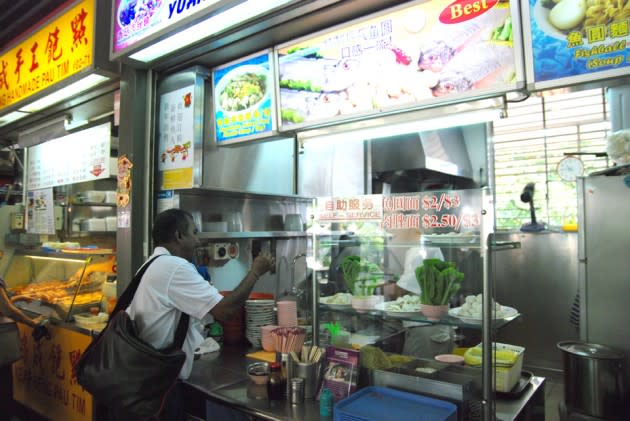
He walked into the stall, fished out a torchlight from his bag and said, “We will check if they have proper food storage, and if they use gloves.” He then shone his torchlight at the dark corners, the exhaust and even into the dustbin. “We also look for cockroaches. Sometimes you can smell them. They have a very pungent smell.” There was nothing.
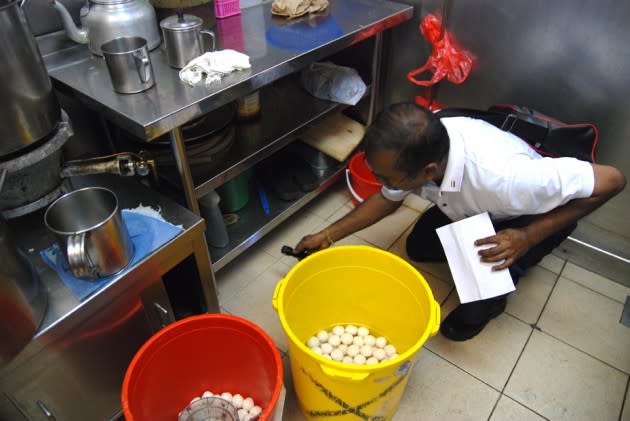
Mohan then asked the stallholder to open her cabinet, as if there were germs on it. He explained that the hawkers sometimes keep their valuables inside, and he doesn’t want to be held responsible if they go missing. After checking the content, he found nothing unusual. The whole inspection took less than five minutes.
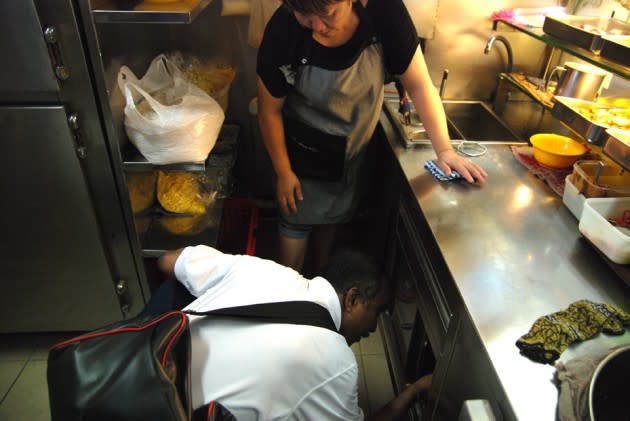
He moved on to the Lor Mee stall and repeated the routine. Inside their fridge, food was packed in containers and neatly stacked up. The general rule of thumb is to keep the raw food below so that it does not contaminate the cooked food if it leaks. There is also a thermostat, as advised by NEA, to ensure that the temperature in the fridge is cold enough to keep the food fresh. All was good at this stall – until the bak choy were found lying on the floor.
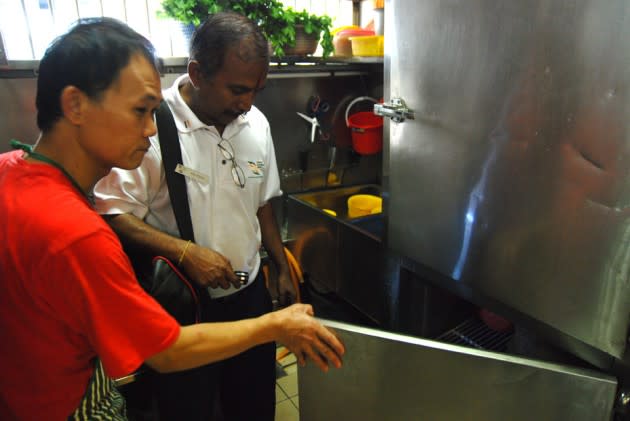
Besides the hygiene certificate ranking the stalls A, B, C and D, there is also a points system to discourage unhygienic behaviours. A hawker’s license will be suspended if he receives 12 demerit points within 12 months.
To my surprise, Mohan did not penalize the stallholder but merely asked him to sweep up the vegetables. “One vegetable on the floor is not so serious. It happens when they get busy,” he said. Amongst all the stalls, Mohan later shared with me, the cze char stalls tend to be more untidy because they have a wider variety of food to prepare and take more orders from each customer.
In the course of his work, Mohan has acquired some culinary knowledge. For example, he learnt that the Japanese rice needs to be aerated so that it will not turn mushy, so even though NEA’s stand is to keep all cooked food covered, he does not impose the rule indiscriminately. “Luckily we don’t have many international cuisines in the hawker centres, otherwise I don’t know if can keep up with all the various cooking methods,” he jests.
But his job also comes with a disadvantage. He is unable to eat at the Tiong Bahru food centre, which is known for its good food. “I like vegetarian food and there are only a few vegetarian stalls here. If I keep eating from those the others will wonder if we have any special relationship,” he explained.
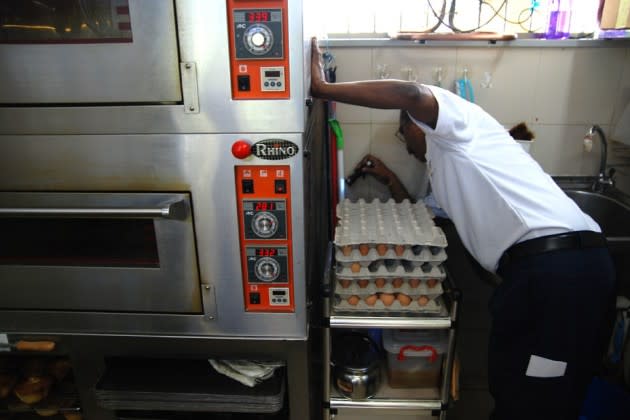
On a typical day, Mohan inspects about 15 stalls as well as the bin centre, toilets and other common areas. Besides that, he also has to attend to the feedback from the public and hawkers association. On his experience as an NEA inspector, prompted by a printed official statement prepared by the communications department, he recited, “I get very great satisfaction because I can help the hawker raise their hygiene standards. Singapore is a food paradise so we have to keep our food clean. I am very glad to be part of this.”


